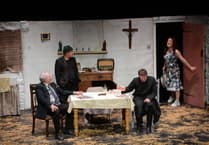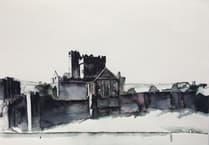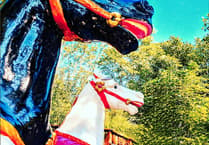When John Maley retired after years in the police force and in law, he turned to his passion for history.
Having gained a first class degree in history after studying at University College Isle of Man, John has pretty much worked full time as an historian and auth since retirement.
His first book was on Manxman Captain Henry Corrin who moved to the Caribbean and Central America and began hugely successful trading mahogany and turtle shells.
When looking into his next project, John was amazed to find no books specifically about the island’s rich and varied seaside entertainment past.
‘When I completed by first book I was searching for another topic to look into,’ John explain. ‘I was surprised to find, among all the Manx books, nothing on the history of Manx seaside entertainment. I found this astonishing considering how important this industry is to the Isle of Man.
‘I decided to fill in this gap by making this topic my second project. It began last year and came to fruition this month.’
In the 17th century, entertainment on the island was rudimentary to say the least. As John puts it ‘entertainment was dancing to the music of a fiddle’.
The island’s entertainment industry only really began to grow in the 19th century but a surprise did pop up during John’s research.
‘The first theatre of note appeared in Wellington Street in Douglas called the Theatre Royal,’ he said. ‘But the first theatre recorded came much earlier on North Quay with evidence of a playhouse in 1759.’

The rise of the seaside entertainment industry in the Isle of Man only gained momentum in the 19th century when there was a rise in immigrants to the island. But it was the industrial revolution which really transformed the seaside entertainment scene.
‘It was the first-time steamships were in operation,’ John explained, ‘and could bring huge numbers of visitors to the island while railways could bring them to the ports.
‘With so many visitors there was a need for theatres which led to the Victoria Hall on Prospect Hill which was the first Gaiety theatre. In 1882 we had the formation of the Grand Theatre in Victoria Street.’
Local lawyer Alfred Laughton then created derby Castle and was soon followed by the Falcon Cliff, Palace Ballroom and the Pavilion – which later became the Gaiety Theatre we know today.
While still important, tourism is no longer the economic driving force it once was. It is easy to forget just how big the industry was at one time.
‘In 1913, there were 630,000 summer visitors to the island,’ John said. ‘That record was never beaten but we regularly had half a million visitors each year, between 1890-1950. The Isle of Man was one of the major European resorts at one stage.’
The arrival of the two world wars and then the rise in discos over theatres in the 1960s signalled the demise of the island’s seaside entertainment industry. The final death knell was the cheap flights to the Mediterranean.
The book titled “Pleasure Domes and Picture Palaces’ was published last week and is available at the Manx Museum, the House of Manannan, the Bridge bookshop chain and the Mostly Manx store in Nelson Street, Douglas, priced at £19.99.




